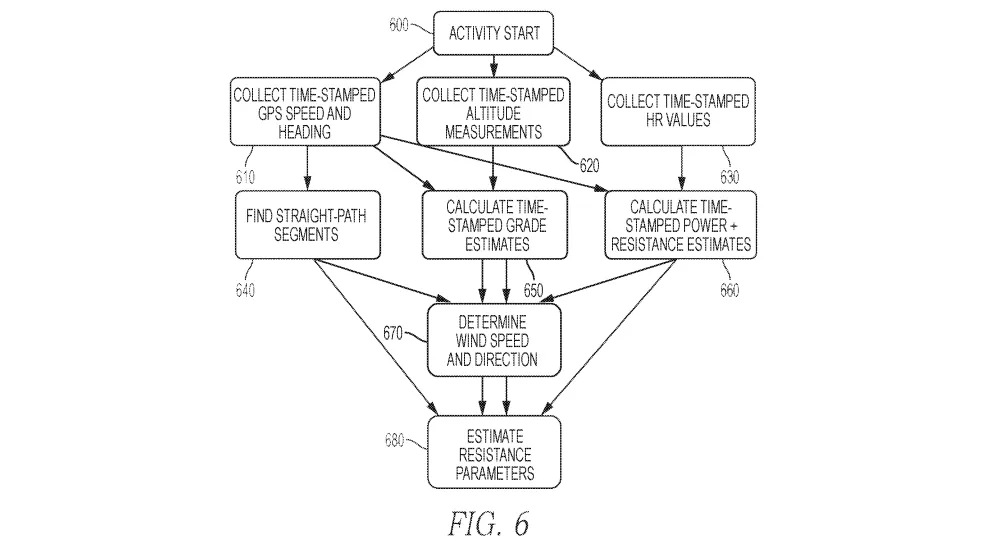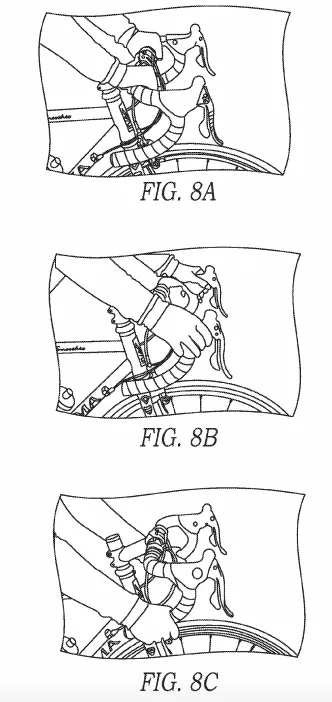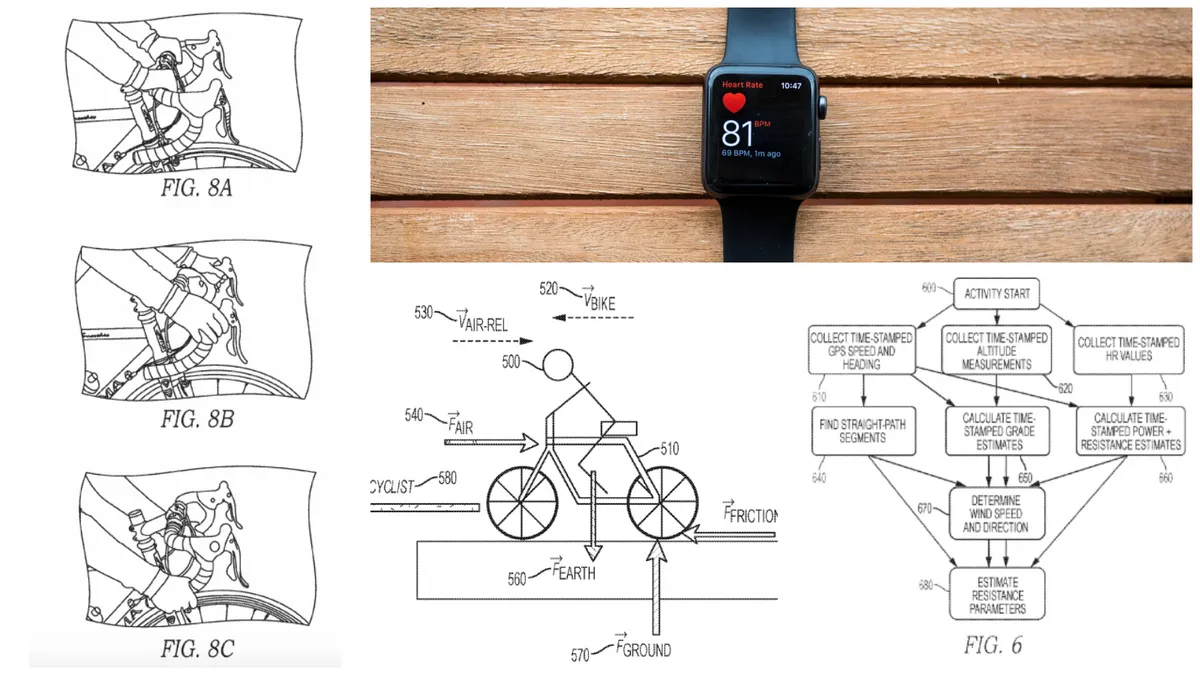This week, the US Patent & Trademark Office published a patent application from Apple that suggests the Californian tech giant is working on a power meter of sorts that may be integrated into the hotly anticipated Apple Watch 3.
The patent describes a device that could calculate your estimated power output using bike speed, wind speed, road gradient and a number of other variables including hand position, velocity, heart rate, altitude and surface type.

A power meter that doesn’t actually measure power is not a new idea. The PowerPod and its predecessor, the iBike Newton+ both calculate power by measuring or estimating all the forces that oppose a rider's forward movement, and calculating from there.
Strava also gives its Premium users estimated power calculations based on speed and road gradient in post-ride analysis. Makers of direct-force-measurement power meters argue that calculating power is nowhere near as accurate as measuring power.

While the PowerPod measures wind speed with sensors, the Apple patent appears to tap the cloud for data, "by reference to an external source of information such as an online weather service," the patent reads. "For example, wind data for the current location may be retrieved from an online weather service using a data network and the current location of the wearable device."

As with the PowerPod, the Apple device could include accelerometers to detect surface type and thus approximate rolling resistance. Of course, neither system has an automatic way to detect what type of tires you are using, nor what your air pressure is.
While filing a patent alone doesn’t mean that Apple is definitely developing a power meter — the brand is well known for filing thousands of patents a year — the wearable tech market continues to grow and we tech obsessed cyclists are easily won over by talk of more numbers to worry about.


